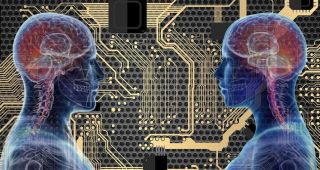Artificial Intelligence
Are Human Brains Gender Neutral?
A new deep-learning model distinguishes males from females using brain images.
Posted March 3, 2024 Reviewed by Gary Drevitch

What impact does being a female or male have in brain development, aging, neurodegenerative disorders, and neuropsychiatric diseases? Researchers at Stanford Medicine published a new study in the Proceedings of the National Academy of Sciences of the United States of America (PNAS) that shows an artificial intelligence (AI) deep learning model that can distinguish between the brains of women and men from image scans of brain activity with over 90% accuracy.
“Our findings underscore the crucial role of sex as a biological determinant in human brain organization, have significant implications for developing personalized sex-specific biomarkers in psychiatric and neurological disorders, and provide innovative AI-based computational tools for future research,” wrote senior author and Professor Vinod Menon, along with lead authors Srikanth Ryali, and Yuan Zhang, Kaustubh Supekar, and Carlo de los Angeles.
Statistically, there are many examples of the differences in prevalence of brain-related diseases and disorders between the sexes. For example, the prevalence of major depressive disorder is higher in adolescent female Americans, according to the National Institute of Mental Health, part of the National Institute of Health (NIH). Globally, around 1 in 3 women will develop major depressive disorder, compared to 1 in 5 men, according to Our World in Data.
Globally, men are at greater risk of developing Parkinson’s disease, and it is not known exactly why, according to the Parkinson’s Foundation. Similarly, more American women than men have Alzheimer’s, and scientists have yet to prove why. Two-thirds of the more than 6.7 million Americans living with Alzheimer’s disease are women, according to the Woman’s Alzheimer’s Movement.
In the U.S., boys are almost four times more likely to be diagnosed with autism spectrum disorder than girls, according to Autism Speaks, and are 13% more likely to be diagnosed with attention-deficit hyperactivity disorder (ADHD), according to the U.S. Centers for Disease Control and Prevention (CDC). Overall, there’s a greater prevalence of diagnosed intellectual disability in boys compared to girls in the U.S. per the CDC.
In the quest for greater insights on the differences between adult female and male brains, scientists at Stanford Medicine created an AI algorithm that considers space-time, called a spatiotemporal deep neural network (stDNN). The AI model consists of convolutional neural network models (CNNs). Convolutional neural networks are multi-layered feed-forward networks that are often used for AI classification of text and images.
“We developed an innovative stDNN model to extract informative brain dynamics features that accurately distinguish between males and females,” the researchers wrote.
The deep neural network model was trained on data from behavioral and brain imaging data of over a thousand individuals taken over multiple sessions from the Human Connectome Project (HCP). The team also used data augmentation to create more labeled training data which boosted the training dataset size from 800 to 12,000 for improved generalizability and accuracy. In data science, data augmentation is often used for image classification tasks to increase the amount of labeled data in order to train deep neural networks.
“The convolutional architecture of our stDNN model is also particularly well suited to brain imaging applications, which have a limited number of labelled training data of varying length,” noted the scientists.
The deep neural network predicts whether the brain images belong to a female or male from the functional magnetic resonance imaging (fMRI) timeseries images of 246 brain regions from the Brainnetome Atlas.
The team assessed the deep neural network on data from approximately 1,500 adults between the ages of 20-35 years old and found it could tell apart female from male brains with over 90% accuracy.
Taking the analysis one step further, the team applied Explainable AI (XAI) to find the key brain features relevant for the decision-making for the deep neural network to distinguish the brain scans of females from males. The limbic network, default mode network (DMN), and striatum were areas of key indicators for the AI model to differentiate between images of female versus male brain activity.
"Our results demonstrate that sex differences in functional brain dynamics are not only highly replicable and generalizable but also behaviorally relevant, challenging the notion of a continuum in male-female brain organization,” concluded the researchers.
Copyright © 2024 Cami Rosso All rights reserved.




